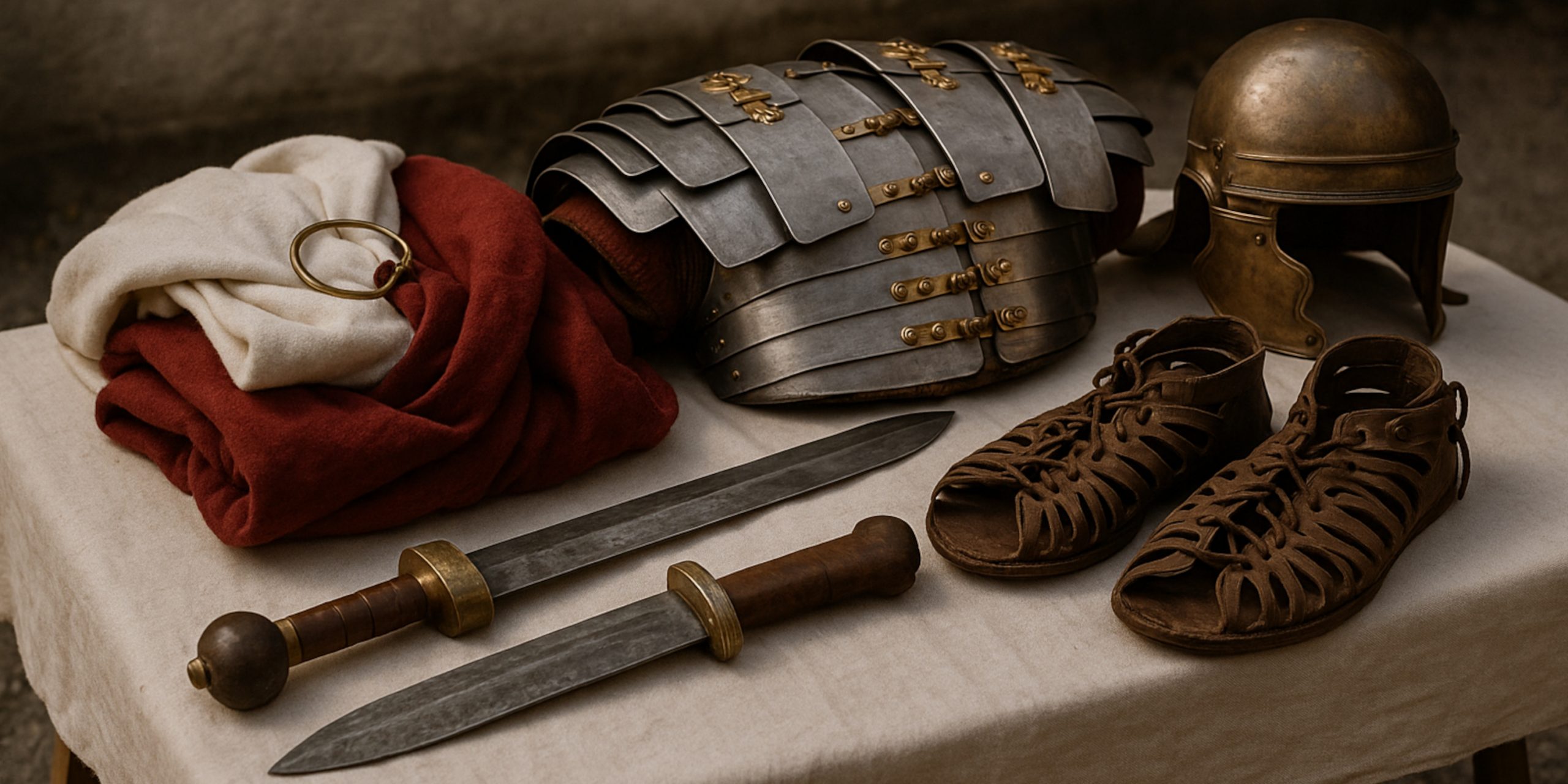
Roman military re-enactment at its best, is a serious effort to recreate the intense discipline, structured tactics, and functional gear that shaped one of history’s most formidable armies. Across the UK and Europe, legions of living history enthusiasts commit themselves to portraying Roman soldiers with accuracy and purpose, offering a closer understanding of the life of a legionary beyond what textbooks can deliver.
The Armour and Equipment of a Legionary
The foundation of any Roman re-enactment group lies in the quality and accuracy of its kit. While variations exist depending on the time period being portrayed, certain items are essential for any Roman soldier impression.
Helmets (Galea): Most groups opt for the Imperial Gallic or Imperial Italic types, with ribbed crests, reinforced cheek guards, and neck flanges. These helmets are made of iron or steel and are often fitted with a linen or leather liner for comfort.
Body Armour (Lorica Segmentata): This articulated plate armour, common in the 1st and 2nd centuries AD, is a hallmark of the early Imperial legionary. Some groups portray later periods using chainmail (lorica hamata) or scale armour (lorica squamata), depending on historical focus.
Weapons: The primary weapon is the gladius, typically the Mainz or Pompeii type, depending on the era. Alongside it, soldiers carry the pilum, a heavy throwing spear designed to bend on impact, and sometimes a pugio (dagger). Re-enactors often stress the importance of weapon construction that meets safety regulations for display or mock combat.
Shields (Scutum): Curved rectangular shields with a central boss, painted with unit symbols, are iconic. They are often made with layered plywood and covered with leather or linen, then painted and reinforced.
Kit and Accessories: A full re-enactor’s kit includes a military tunic, caligae (hobnailed sandals), a cingulum militare (belt with decorative fittings), and a marching pack with rations, tools, and camp gear. Authentic detail extends to tent materials, cooking methods, and grooming tools.
Watch the guide:
Training Like a Roman Soldier
Drill and discipline define Roman re-enactment as much as the gear. Serious groups train regularly in formation movement, marching rhythms, and battlefield commands, often in Latin. This focus on discipline creates a strong visual impact during public displays, but also gives re-enactors a real appreciation of how Roman units functioned on campaign.
Formations such as the testudo (tortoise), wedge, and open-order skirmishing are taught and practised. Timing, spacing, and cohesion are emphasised, often under the instruction of a designated centurion who mirrors the historic role of enforcing order and readiness.
Re-enactors also run through weapons drills, pilum throwing, gladius work, and even basic construction and camp duties. The repetition and rigour of these routines underscore how much physical conditioning and coordination Roman soldiers required.
Historical Accuracy vs Practical Reality
While many groups strive for complete accuracy, compromises are sometimes made for safety, cost, or modern practicality. Authentic materials like wool, leather, and bronze are preferred, but stainless steel or synthetic fabrics might be used sparingly. Footwear is often adapted with modern insoles. Most groups clearly communicate where and why such deviations occur, keeping the emphasis on transparency rather than purism.
There’s also a growing trend of re-enacting auxiliary units, cavalry, and even Roman enemies like Dacians or Germanic tribes, expanding the educational scope and adding tactical variety to events.
The Role of Roman Re-enactment Today
More than performance, Roman re-enactment serves as an immersive form of experimental archaeology. It helps test historical claims about military endurance, gear efficiency, and campaign logistics. Groups collaborate with museums, schools, and academic researchers to offer live interpretations of ancient military life.
Public displays remain a core part of the experience, particularly at Roman sites such as Vindolanda, Caerleon, or Hadrian’s Wall. But many re-enactors take equal pride in behind-the-scenes research, restoration of gear, and quiet moments of marching across the countryside with pack and scutum, chasing something of the rhythm and hardship a legionary once knew.
The Seven Swords Takeaway
Re-enacting the Roman army demands more than just enthusiasm. It requires patience, precision, and a willingness to step into the hard-leather sandals of a soldier from two millennia ago. Done well, it’s not nostalgia, but reconstruction. The result is a form of historical engagement that rewards both its audience and its participants with a deeper, grittier sense of what Roman military life really meant.
Watch Roman battle frome the TV Series Rome:



